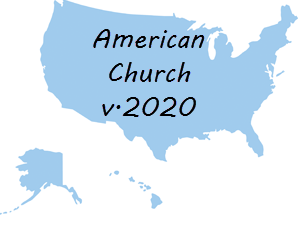Meet the Author Eric Klinenberg is Professor of Sociology; Public Policy; and Media, Culture, and Communications at New York University. At NYU, Klinenberg teaches courses on "the sociology of cities, culture, and media, as well graduate seminars on research methods, ethnography, and urban design." His first book, Heat Wave: A Social Autopsy of Disaster in Chicago (2003), won six scholarly and literary prizes. In the years since, he has written two additional Read More …
Trends
A Way Forward for American Christianity (#0720)
New York Times columnist Ross Gregory Douthat was interviewed in the May 2012 edition of Christianity Today on the occasion of the release of his latest book: Bad Religion: How We Became a Nation of Heretics (2012). He suggests that the United States has always been a "nation of heretics," but that this tendency was, until recently, always countered and overwhelmed by institutional Christianity. In response to the question "How can we begin to address a nation of heretics" Douthat proposes, Read More …
America’s Slow Internet (#0718)
According to Akamai's latest research, American cities don't fare well when it comes to internet speed. More specifically, no US city is among the top fifty best connected cities (based on average connection speed during the fourth quarter of 2011). The only countries represented in this top tier are Japan (41 cities) South Korea (6 cities) Sweden (2 cities) Hong Kong (1 city) So What? Speed matters. While most web surfers don't need blazing fast speeds, few Read More …
Age & Belief in God (#0717)
A few days ago a Huffington Post article reported on a recent study "based on data collected as part of the General Social Survey by researchers at the National Opinion Research Center (NORC) at the University of Chicago" that found older people are more religious. The pattern of higher rates of belief in God among older respondents was consistent throughout the world (in the 30 countries considered by this research). So What? While some commonly held views about religion are Read More …
Plate or Plate Free? (#0715)
Shane Raynor recently wrote a blog post encouraging congregations to adopt a plate free practice. More specifically, Raynor proposes that congregations that still pass offering plates or baskets consider moving away from this practice for several reasons: Many people don’t use cash and checks anymore. Some people believe the negative stereotypes about churches and money. Passing the plate puts people on the spot. Someone could get the idea that church has a cover Read More …
My Useless Education is Quite Useful (#0709)
"The 13 Most Useless Majors" is a truly unique list worthy of discussion given the amount and significance of conversation surrounding reforming higher education. To create the list, the authors narrowed the field of possible majors using "new research (PDF) from Georgetown University" then applying "data from the Bureau of Labor Statistics, equally weighing the following categories to determine current and future employment and earnings potential for our final ranking: Recent graduate Read More …
The Future Church (v.2020) – 10 Shifts (#0708)
Over the last two weeks I have shared the top ten ways I hope the American church of 2020 will differ from the church of 2012. The list builds on trends in church and the larger culture; is realistic rather than idealistic; and is guided by hope in rather than fear about the future. The list seeks to consider broad shifts within American Christianity rather than specific changes or changes more likely in some traditions and less likely in others. Additionally, it Read More …
Future Church – More About Deeds (#0707)
Church v.2020 - Ten Changes: #1 More About Deeds – Less About Creeds When compared with the American church of 2012, the future church (v.2020) will be more about deeds and less about creeds. "Religious" experiences will be valued over "religious" information, especially among younger generations and those of all ages who self-identify as postmodern. Orthopraxy (correct actions) will precede (more about beginning by belonging rather than believing was explored in the #5 change for Read More …
Future Church – More Egalitarian (#0706)
Church v.2020 - Ten Changes: #2 More Egalitarian – Less Hierarchical When compared with the American church of 2012, the future church (v.2020) will be more egalitarian and less hierarchical. This shift will be fueled by a greater emphasis on the priesthood of all believers, including efforts to help all within the faith community identify and use their gifts in areas of personal interest and passion; use of technology, especially to help those in Read More …
Future Church – More Innovative (#0705)
Church v.2020 - Ten Changes: #3 More Innovative – Less Predictable When compared with the American church of 2012, the future church (v.2020) will be markedly more innovative and significantly less predictable. This change will be evidenced in many ways, including: A move away from a model of risk aversion best known by the so-called seven last words of the church ("we never did it that way before") to a mentality of welcoming new possibilities and giving people permission Read More …









